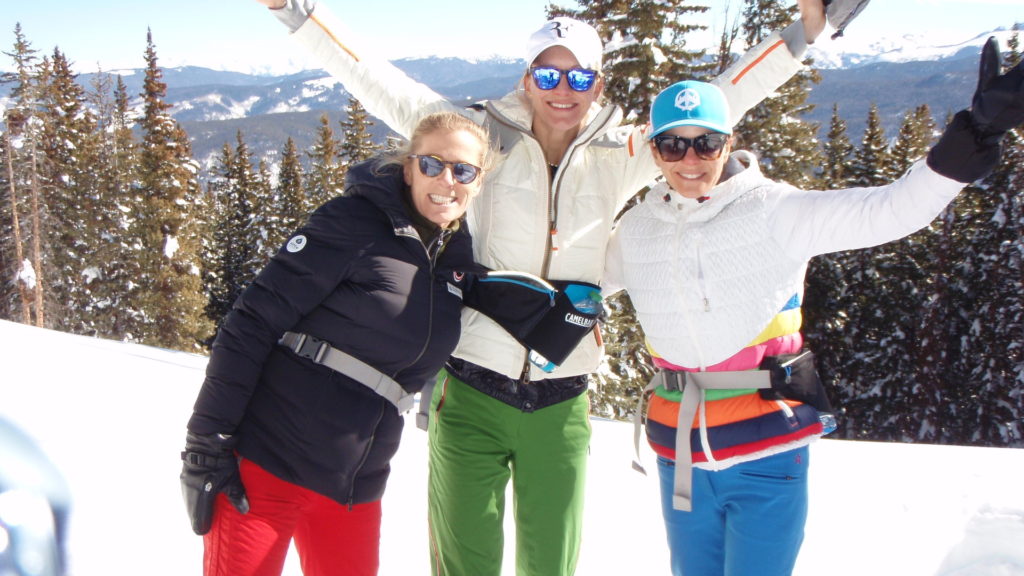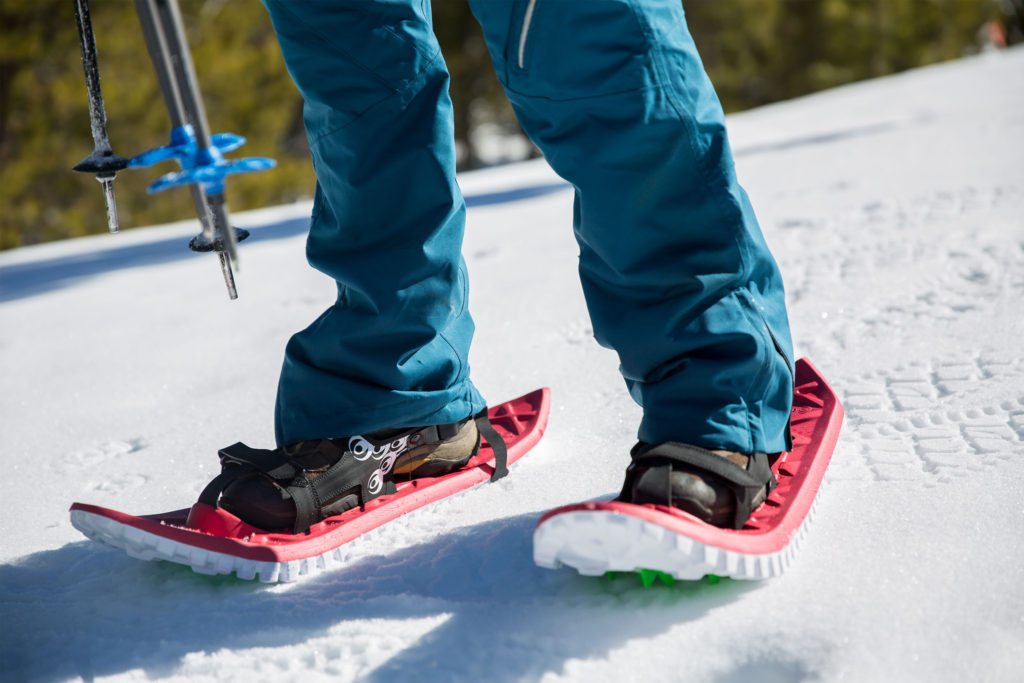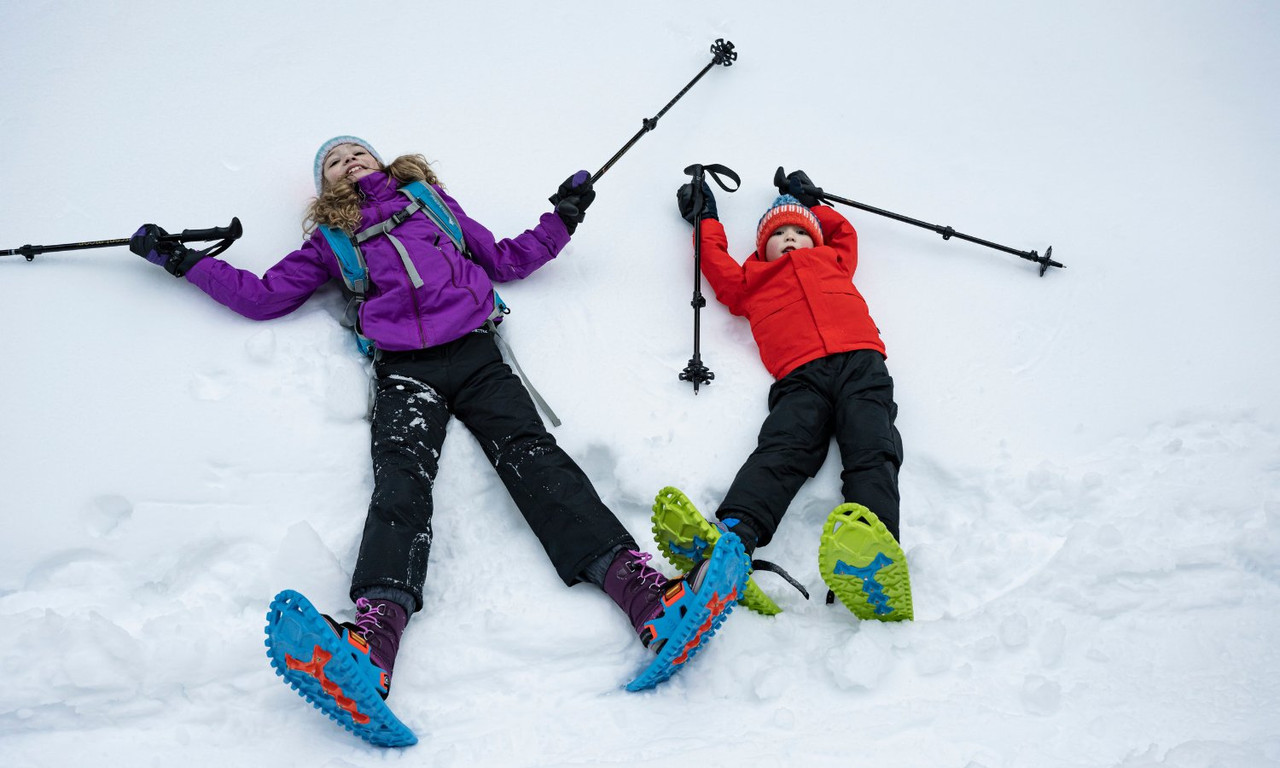3 Tips on Snowshoeing in Spring Conditions
Posted by Crescent Moon on Dec 28th 2020
What's not to like about this simple pleasure
Snowshoeing in spring is a wonderful thing and if you're new to the idea then welcome to the best time to get outside and enjoy yourself in the snow. Not that there's anything wrong with February but when the sun is out and you're in one of nature's most amazing environments, you're in the bonus category of outdoor recreation.
A number of articles and studies have been written about the physical, mental and stress-reducing benefits of an outdoor activity. You probably don't need a doctor, or monk, to tell you that, but it's always good to be reminded you're doing the best thing you can do for yourself, and others around you. And snowshoeing has some very unique benefits that not all other outdoor activities can claim. It's quiet, it's peaceful, physically rewarding, aerobically beneficial, and a great way to get your D and K vitamins.

Spring Snowshoe Tip No.1
Even though the weather is warm, particularly while the sun is out, as soon as that big yellow orb ducks behind the clouds, you'd better have your winter clothing to put on. You can always take clothing off if you're too hot, but if you don't have it to take off, the air temperature is cold and within a very short period of time you could find yourself in a potentially dangerous situation. Add to that that spring conditions can change very quickly, especially if you're at altitude where for each 1000' in elevation gain you will lose 2 to 4 degrees of temperature just from the air alone. Blend in the other elements of snow or rain and wind and you can imagine how quickly you might develop hypothermia. Put simply, just be prepared and respect the fact that mother nature can be unpredictable. She can also provide the best place to find your bliss so get out there and open your mind.

Spring Snowshoe Tip No. 2
Snowshoeing is hiking on snow. And if you're an experienced hiker you already know that water, maps, a backpack with some food and telling others where you're going is all a part of the protocol. But for snowshoeing you need to add another consideration to the list and that's your equipment.- your snowshoes. Check your snowshoes before you go out and the longer you plan on being outside, the more important it is to know your equipment is reliable and dependable and if something does happen to it, it can be easily fixed in the field. If you're going on a hike around the park, probably not a big deal, but the further you get from your car or other people, the more important it is to know your equipment. Spend a moment figuring out what tools might be necessary, or repair materials that could be used to patch you up so you can get back to base.
Some snowshoes are more simple to work on than others, but none of them are terribly complicated. Duck tape is an amazing temporary fix for many things you might encounter in the backwoods, and a pocket knife is pretty handy too. If you're a veteran of the outdoors you already know this stuff, but for those of you who are just getting introduced to the outdoors and snowshoes, a little common sense will go a long ways. You don't have to get decked out with gear to have a good time outdoors, but having a small day pack with just a couple of the right things can be simple, lightweight, and if or when you need them, very appreciated.
Spring Snowshoe Tip No. 3
You're going to sweat. Snowshoeing is surprisingly sweaty, although you may have guessed that since you're wearing your winter clothes and the spring weather can often be warm, that you're going to work up some calories. But you won't believe how much you can off load in a very short period of time, and that's why this tip is worth its weight in water. Seriously, bring it. Combining a great work out with variable temperatures and going from hot to cold in a matter of minutes it's possible to dehydrate yourself pretty quickly. Another way to deal with this is to drink a bunch of water or electrolytes before you go out. It's still a good idea to bring water, but at least your body will be "full" so you can go for sometime before you go empty. When you get back to wherever you started from, it you're going to be standing around afterward, it's nice to have something dry and warm to get into. I always get out of my winter-wear almost immediately to let the sweat wick out of my under-layers and if i get cold from the beer i consume, I can put the parka back on and my water-proof ski pants (of course) will be dry and relatively comfortable.
None of this advice is applicable if you're just running out your door and going for a quick hour run or walk, but if you're in the mountains, where I like to go, all of this advice may be intuitive, but it's definitely valuable to be reminded of it.
That's a Wrap On The Snowshoe Season
The great thing about snowshoeing in spring conditions is the experience itself. I love to ski, play tennis, run, walk, hike, fish, you know, just be outside. But when all the stars are aligned and the sun is shining and you're lucky enough to hit a place that just got snow the night before, and maybe you're the only one there, I'm not kidding, it's incredible. Just to get away from the traffic and the noise of other people and their problems is about the best recharge you can imagine. Add a mountain view, a wildlife siting, and hearing the sound of your own breathing in an otherwise perfectly quiet place and it's downright trans-formative.
